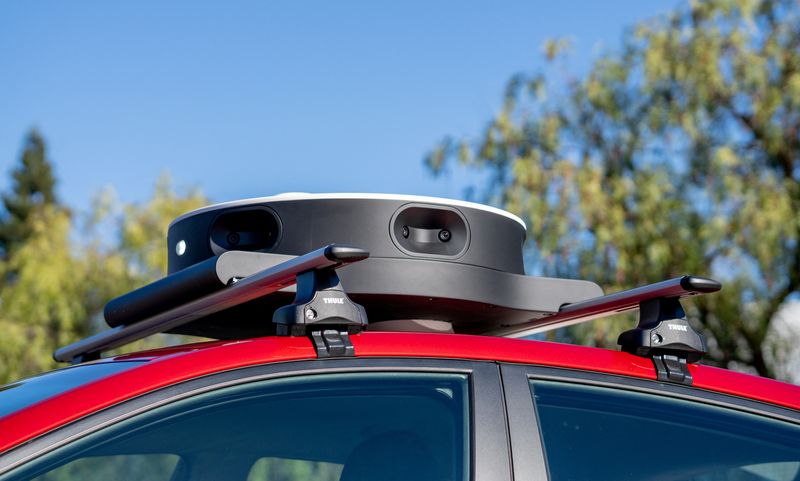By Hyunjoo Jin
San Francisco (Reuters) -Toyota Motor Corp device Woven Earth is next the direct of Tesla (NASDAQ:) Inc in making an attempt to advance self-driving technologies with small-price tag cameras.
Woven World advised Reuters it is capable to use cameras to acquire information and proficiently practice its self-driving procedure, a “breakthrough” that it hopes will assistance travel down fees and scale up the technologies.
Accumulating assorted driving info employing a large fleet of vehicles is critical to acquiring a robust self-driving motor vehicle process, but it is high priced and not scalable to examination autonomous motor vehicles only with costly sensors, it reported.
Woven World nonetheless works by using details gathered from other sensors like radars and lidars for instruction as very well as long-term deployment.
Tesla has been betting on cameras to collect knowledge from over 1 million autos on the highway to acquire its automated driving know-how, while Alphabet (NASDAQ:)’s Waymo and other self-driving car or truck firms added high priced sensors like lidars to a tiny number of autos.
“We want a good deal of data. And it can be not ample to just have a little total of facts that can be collected from a small fleet of quite high-priced autonomous automobiles,” Michael Benisch, vice president of Engineering at Woven Planet, mentioned in an job interview with Reuters.
“Somewhat, we are making an attempt to display that we can unlock the gain that Toyota and a huge automaker would have, which is entry to a huge corpus of info, but with a a great deal decrease fidelity,” stated Benisch, a former engineering director at Lyft’s self-driving division, which Toyota obtained past year.
Woven Planet makes use of cameras that are 90% more affordable than sensors that it utilized right before and can be easily set up in fleets of passenger vehicles.
It said utilizing a bulk of information coming from minimal-charge cameras amplified its system’s general performance to a level comparable to when the process was qualified exclusively on higher-expense sensor information.
He stated, nonetheless, Toyota would nonetheless use multiple sensors these as lidars and radars for robotaxis and other autonomous motor vehicles to be deployed on the road, as this currently appeared to be the ideal, safest tactic to producing robotaxis.
Toyota is also partnering with Aurora in testing an autonomous experience-hailing fleet https://www.reuters.com/company/autos-transportation/toyota-aurora-exam-generate-autonomous-trip-hailing-fleet-texas-2022-03-23 based on the Toyota Sienna minivans, equipped with lidars, radars, and cameras.
“But in lots of, many several years, it is completely feasible that digital camera form technologies can catch up and overtake some of the additional innovative sensors,” he explained.

“The issue could be additional about when and how extensive it will acquire to arrive at a level of safety and reliability. I never think we know that still.”
Tesla’s CEO Elon Musk reported it can accomplish full autonomy with cameras this calendar year https://www.reuters.com/posting/tesla-robots-idCNL1N2U702E just after missing his past targets quite a few periods.

